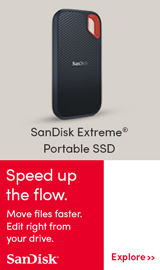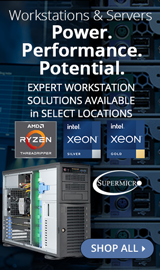Breadcrumbs
- Selected Refinements:
- Hard Drives & Data Storagex
- SSD (Solid State Drives)x
- Internalx
Special Offers / Advertisements
Compare up to 4 items
New list of matching products
X
Sorry, you may compare a maximum of 4 items at a time.
Please clear one or more of your compare items before adding another-
SKU: 762955
25+ IN STOCK at Houston Store -
25+ IN STOCK at Houston Store
-
25+ IN STOCK at Houston Store
-
SKU: 762948
25+ IN STOCK at Houston Store -
SKU: 762963
4 IN STOCK at Houston StoreOur price $74.99Original price $112.99Save $38.00 -
SKU: 815241
25+ IN STOCK at Houston Store1 open box from $365.96 -
SKU: 815258
25+ IN STOCK at Houston Store -
25+ IN STOCK at Houston Store
-
25+ IN STOCK at Houston StoreOur price $129.99
Original price $179.99Save $50.00 -
Save $45 when purchased with any CPU, Motherboard, or Memory
SKU: 749895
13 IN STOCK at Houston StoreOur price $599.99Original price $829.99Save $230.00 -
1 IN STOCK at Houston StoreOur price $349.99
Original price $569.99Save $220.00 -
2 IN STOCK at Houston StoreOur price $259.99
Original price $391.99Save $132.00 -
25+ IN STOCK at Houston StoreOur price $124.99
Original price $199.99Save $75.00 -
9 IN STOCK at Houston StoreOur price $159.99
Original price $204.99Save $45.001 open box from $135.96 -
25+ IN STOCK at Houston StoreOur price $69.99
Original price $104.99Save $35.00 -
8 IN STOCK at Houston StoreOur price $84.99
Original price $134.99Save $50.002 open box from $67.96 -
25+ IN STOCK at Houston StoreOur price $64.99
Original price $84.99Save $20.00 -
16 IN STOCK at Houston StoreOur price $189.99
Original price $319.99Save $130.00 -
Save $20 when purchased with any CPU, Motherboard, or Memory
SKU: 753095
15 IN STOCK at Houston StoreOur price $299.99Original price $384.99Save $85.00 -
SKU: 658765
25 IN STOCK at Houston StoreOur price $119.99Original price $204.99Save $85.00 -
25+ IN STOCK at Houston StoreOur price $114.99
Original price $149.99Save $35.00 -
SKU: 815266
25+ IN STOCK at Houston Store1 open box from $123.96 -
25+ IN STOCK at Houston StoreOur price $62.99
Original price $149.99Save $87.00 -
SKU: 529768
25+ IN STOCK at Houston StoreOur price $35.99Original price $49.99Save $14.00
Special Offers / Advertisements
{
'name': '990 EVO Plus 2TB Samsung V NAND TLC NAND PCIe Gen 4 x4 and PCIe Gen 5 x2 NVMe M.2 Internal SSD',
'id': '686633',
'price': '139.99',
'membersaving': '0',
'coord': 'HF2J',
'core': 'Drives',
'brand': 'Samsung',
'category': 'SSD (Solid State Drives)|512',
'list': 'Search Results',
'position': 1
},{
'name': '990 PRO 2TB Samsung V NAND 3-bit MLC PCIe Gen 4 x4 NVMe M.2 Internal SSD',
'id': '660429',
'price': '159.99',
'membersaving': '0',
'coord': 'HF2J',
'core': 'Drives',
'brand': 'Samsung',
'category': 'SSD (Solid State Drives)|512',
'list': 'Search Results',
'position': 2
},{
'name': '990 PRO 4TB Samsung V NAND TLC NAND PCIe Gen 4 x4 NVMe M.2 Internal SSD',
'id': '671225',
'price': '299.99',
'membersaving': '0',
'coord': 'HF2J',
'core': 'Drives',
'brand': 'Samsung',
'category': 'SSD (Solid State Drives)|512',
'list': 'Search Results',
'position': 3
},{
'name': '990 EVO Plus 4TB Samsung V NAND TLC NAND PCIe Gen 4 x4 and PCIe Gen 5 x2 NVMe M.2 Internal SSD',
'id': '686634',
'price': '239.99',
'membersaving': '0',
'coord': 'HF2J',
'core': 'Drives',
'brand': 'Samsung',
'category': 'SSD (Solid State Drives)|512',
'list': 'Search Results',
'position': 4
},{
'name': '990 EVO Plus 1TB Samsung V NAND TLC NAND PCIe Gen 4 x4 and PCIe Gen 5 x2 NVMe M.2 Internal SSD',
'id': '686632',
'price': '74.99',
'membersaving': '0',
'coord': 'HF2J',
'core': 'Drives',
'brand': 'Samsung',
'category': 'SSD (Solid State Drives)|512',
'list': 'Search Results',
'position': 5
},{
'name': '9100 PRO 4TB Samsung V NAND TLC NAND (V8) PCIe Gen 5 x4 and PCIe Gen 5 x4 NVMe M.2 Internal SSD',
'id': '691301',
'price': '429.99',
'membersaving': '0',
'coord': 'HF2J',
'core': 'Drives',
'brand': 'Samsung',
'category': 'SSD (Solid State Drives)|512',
'list': 'Search Results',
'position': 6
},{
'name': '9100 PRO 2TB Samsung V NAND TLC NAND (V8) PCIe Gen 5 x4 and PCIe Gen 5 x4 NVMe M.2 Internal SSD',
'id': '691300',
'price': '229.99',
'membersaving': '0',
'coord': 'HF2J',
'core': 'Drives',
'brand': 'Samsung',
'category': 'SSD (Solid State Drives)|512',
'list': 'Search Results',
'position': 7
},{
'name': '990 PRO 1TB Samsung V NAND 3-bit MLC PCIe Gen 4 x4 NVMe M.2 Internal SSD',
'id': '660428',
'price': '99.99',
'membersaving': '0',
'coord': 'HF2J',
'core': 'Drives',
'brand': 'Samsung',
'category': 'SSD (Solid State Drives)|512',
'list': 'Search Results',
'position': 8
},{
'name': 'Platinum P41 2TB 176L 3D TLC NAND Flash PCIe Gen 4 x4 NVMe M.2 Internal SSD',
'id': '671857',
'price': '129.99',
'membersaving': '0',
'coord': 'HF2K',
'core': 'Drives',
'brand': 'SK Hynix',
'category': 'SSD (Solid State Drives)|512',
'list': 'Search Results',
'position': 9
},{
'name': 'Black SN850X 8TB 3D TLC NAND Flash PCIe Gen 4 x4 NVMe M.2 2280 Internal SSD',
'id': '683439',
'price': '599.99',
'membersaving': '0',
'coord': 'HF2J',
'core': 'Drives',
'brand': 'WD',
'category': 'SSD (Solid State Drives)|512',
'list': 'Search Results',
'position': 10
},{
'name': '9100 PRO 4TB Samsung V NAND TLC NAND (V8) PCIe Gen 5 x4 and PCIe Gen 5 x4 NVMe M.2 Internal SSD with Heatsink',
'id': '691304',
'price': '349.99',
'membersaving': '0',
'coord': 'HF2J',
'core': 'Drives',
'brand': 'Samsung',
'category': 'SSD (Solid State Drives)|512',
'list': 'Search Results',
'position': 11
},{
'name': '870 EVO 4TB SSD 3-bit MLC V-NAND SATA III 6Gb/s 2.5" Internal Solid State Drive',
'id': '632087',
'price': '259.99',
'membersaving': '0',
'coord': 'HF2A',
'core': 'Drives',
'brand': 'Samsung',
'category': 'SSD (Solid State Drives)|512',
'list': 'Search Results',
'position': 12
},{
'name': 'Performance Plus 2TB 3D TLC NAND PCIe Gen 4 x4 NVMe M.2 Internal SSD',
'id': '642168',
'price': '124.99',
'membersaving': '0',
'coord': 'HF2N',
'core': 'Drives',
'brand': 'Inland',
'category': 'SSD (Solid State Drives)|512',
'list': 'Search Results',
'position': 13
},{
'name': '870 EVO 2TB SSD 3-bit MLC V-NAND SATA III 6Gb/s 2.5" Internal Solid State Drive',
'id': '632086',
'price': '159.99',
'membersaving': '0',
'coord': 'HF2A',
'core': 'Drives',
'brand': 'Samsung',
'category': 'SSD (Solid State Drives)|512',
'list': 'Search Results',
'position': 14
},{
'name': 'Performance Plus 1TB 3D TLC NAND PCIe Gen 4 x4 NVMe M.2 Internal SSD',
'id': '642169',
'price': '69.99',
'membersaving': '0',
'coord': 'HF2N',
'core': 'Drives',
'brand': 'Inland',
'category': 'SSD (Solid State Drives)|512',
'list': 'Search Results',
'position': 15
},{
'name': '870 EVO 1TB SSD 3-bit MLC V-NAND SATA III 6Gb/s 2.5" Internal Solid State Drive',
'id': '632085',
'price': '84.99',
'membersaving': '0',
'coord': 'HF2A',
'core': 'Drives',
'brand': 'Samsung',
'category': 'SSD (Solid State Drives)|512',
'list': 'Search Results',
'position': 16
},{
'name': 'Platinum 1TB SSD 3D TLC NAND SATA III 6Gb/s 2.5" Internal Solid State Drive',
'id': '659879',
'price': '64.99',
'membersaving': '0',
'coord': 'HF2E',
'core': 'Drives',
'brand': 'Inland',
'category': 'SSD (Solid State Drives)|512',
'list': 'Search Results',
'position': 17
},{
'name': '9100 PRO 2TB Samsung V NAND TLC NAND (V8) PCIe Gen 5 x4 and PCIe Gen 5 x4 NVMe M.2 Internal SSD with Heatsink',
'id': '691303',
'price': '189.99',
'membersaving': '0',
'coord': 'HF2J',
'core': 'Drives',
'brand': 'Samsung',
'category': 'SSD (Solid State Drives)|512',
'list': 'Search Results',
'position': 18
},{
'name': 'Black SN850X 4TB 112L BiCS5 TLC NAND Flash PCIe Gen 4 x4 NVMe M.2 Internal SSD',
'id': '682896',
'price': '299.99',
'membersaving': '0',
'coord': 'HF2J',
'core': 'Drives',
'brand': 'WD',
'category': 'SSD (Solid State Drives)|512',
'list': 'Search Results',
'position': 19
},{
'name': '990 EVO 2TB Samsung V NAND TLC NAND PCIe Gen 4 x4 and PCIe Gen 5 x2 NVMe M.2 Internal SSD',
'id': '676018',
'price': '119.99',
'membersaving': '0',
'coord': 'HF2J',
'core': 'Drives',
'brand': 'Samsung',
'category': 'SSD (Solid State Drives)|512',
'list': 'Search Results',
'position': 20
},{
'name': 'Platinum 2TB SSD 3D TLC NAND SATA III 6Gb/s 2.5" Internal Solid State Drive',
'id': '665454',
'price': '114.99',
'membersaving': '0',
'coord': 'HF2E',
'core': 'Drives',
'brand': 'Inland',
'category': 'SSD (Solid State Drives)|512',
'list': 'Search Results',
'position': 21
},{
'name': '9100 PRO 1TB Samsung V NAND TLC NAND (V8) PCIe Gen 5 x4 and PCIe Gen 5 x4 NVMe M.2 Internal SSD',
'id': '691299',
'price': '154.99',
'membersaving': '0',
'coord': 'HF2J',
'core': 'Drives',
'brand': 'Samsung',
'category': 'SSD (Solid State Drives)|512',
'list': 'Search Results',
'position': 22
},{
'name': 'QN450 1TB SSD 3D QLC NAND PCIe Gen 4 x4 NVMe M.2 2280 Internal Solid State Drive',
'id': '680085',
'price': '62.99',
'membersaving': '0',
'coord': 'HF2N',
'core': 'Drives',
'brand': 'Inland',
'category': 'SSD (Solid State Drives)|512',
'list': 'Search Results',
'position': 23
},{
'name': 'TN320 512GB SSD NVMe PCIe Gen 3.0x4 M.2 2280 3D NAND TLC Internal Solid State Drive',
'id': '661860',
'price': '35.99',
'membersaving': '0',
'coord': 'HF2N',
'core': 'Drives',
'brand': 'Inland',
'category': 'SSD (Solid State Drives)|512',
'list': 'Search Results',
'position': 24
}
{'id': 'Banner',
'name': 'WD Black Internal SSD Banner',
'creative': 'https://60a99bedadae98078522-a9b6cded92292ef3bace063619038eb1.ssl.cf2.rackcdn.com/webp_webp_WDBlk__search_banner2.jpg',
'position': '1' },{'id': 'Banner',
'name': 'Crucial SSD Web Ad',
'creative': 'https://60a99bedadae98078522-a9b6cded92292ef3bace063619038eb1.ssl.cf2.rackcdn.com/webp_crucial_X9_search_banner.webp',
'position': '2' },{'id': 'Banner',
'name': 'Microsoft Windows 11 Web Banner',
'creative': 'https://60a99bedadae98078522-a9b6cded92292ef3bace063619038eb1.ssl.cf2.rackcdn.com/webp_12_2023Windows11.webp',
'position': '3' },{'id': 'Tower',
'name': 'SanDisk SSD Web Ad August 2020',
'creative': 'https://60a99bedadae98078522-a9b6cded92292ef3bace063619038eb1.ssl.cf2.rackcdn.com/images_ads_2020Search_SAN19_019_New_Extreme_search_Tower.jpg',
'position': '1' },{'id': 'Tower',
'name': 'SMB Best for Business - Houston',
'creative': 'https://60a99bedadae98078522-a9b6cded92292ef3bace063619038eb1.ssl.cf2.rackcdn.com/images_ads_2021Search_August_WorkstationST.png',
'position': '2' },{'id': 'Tower',
'name': 'Micro Center eNews Banner',
'creative': 'https://60a99bedadae98078522-a9b6cded92292ef3bace063619038eb1.ssl.cf2.rackcdn.com/webp_MCNewsST.webp',
'position': '3' }































